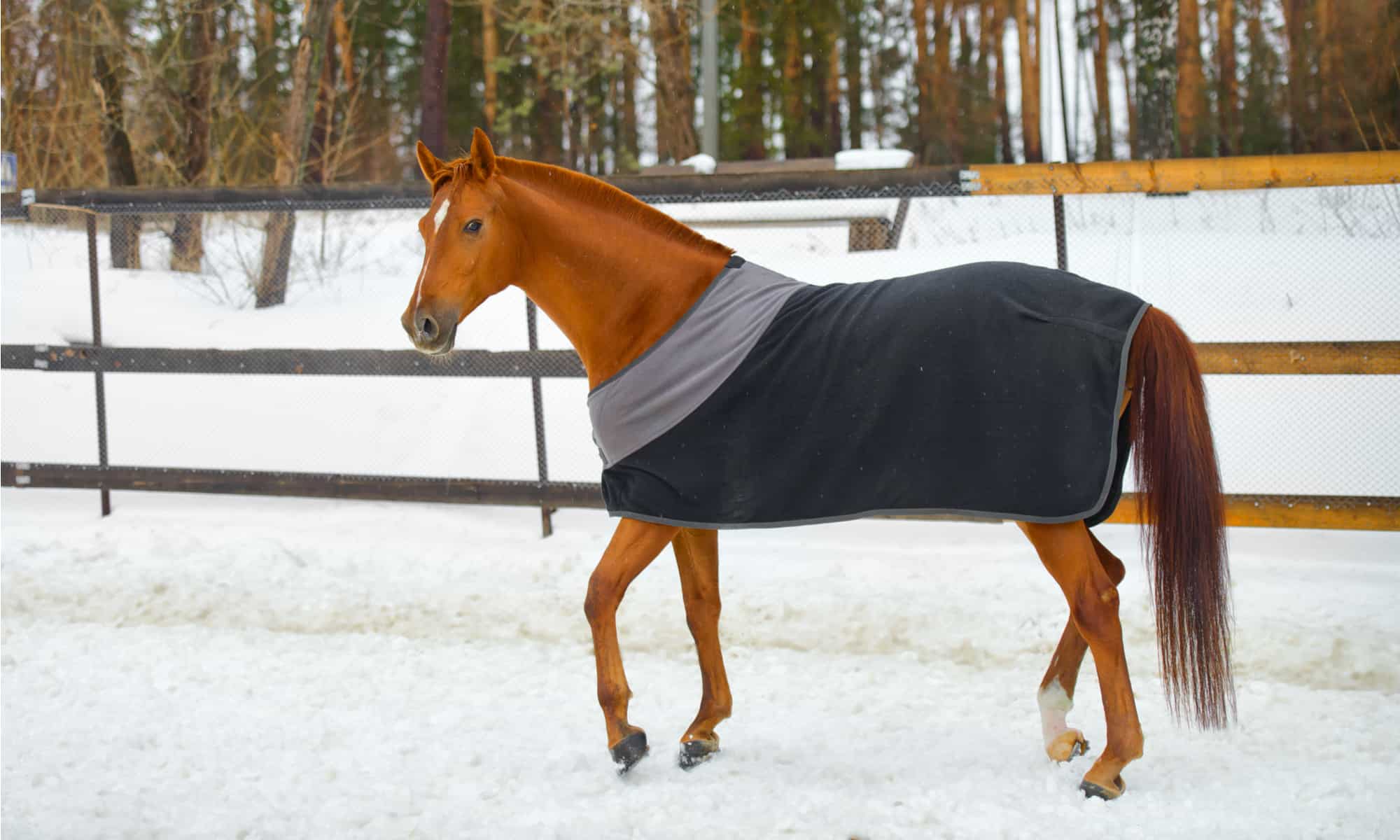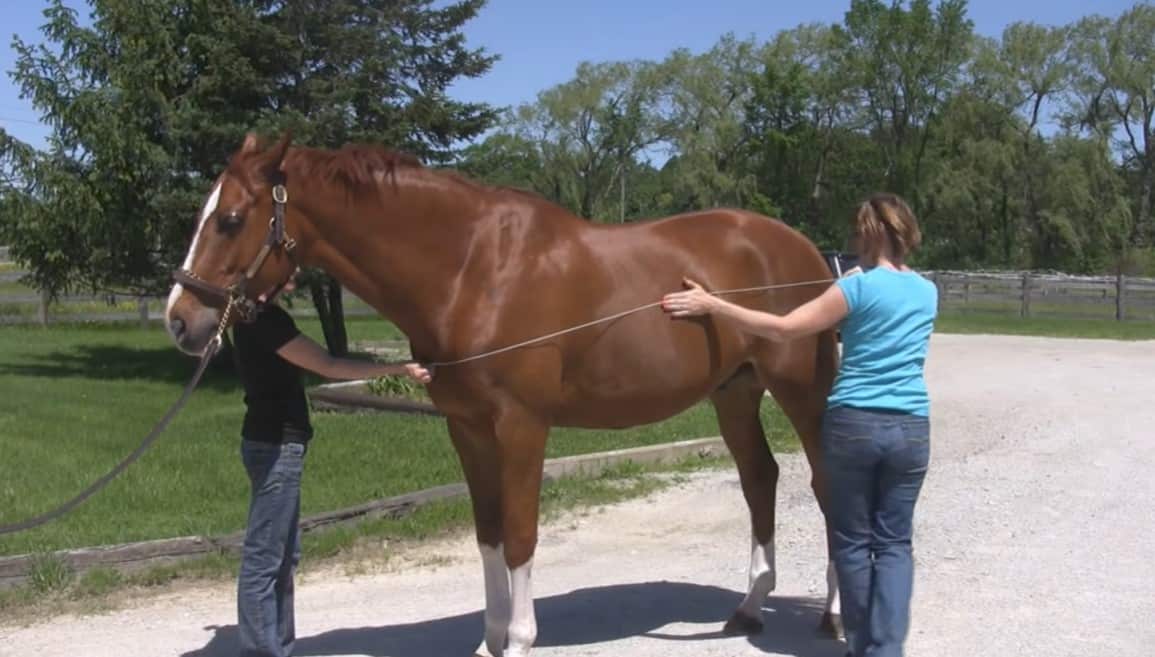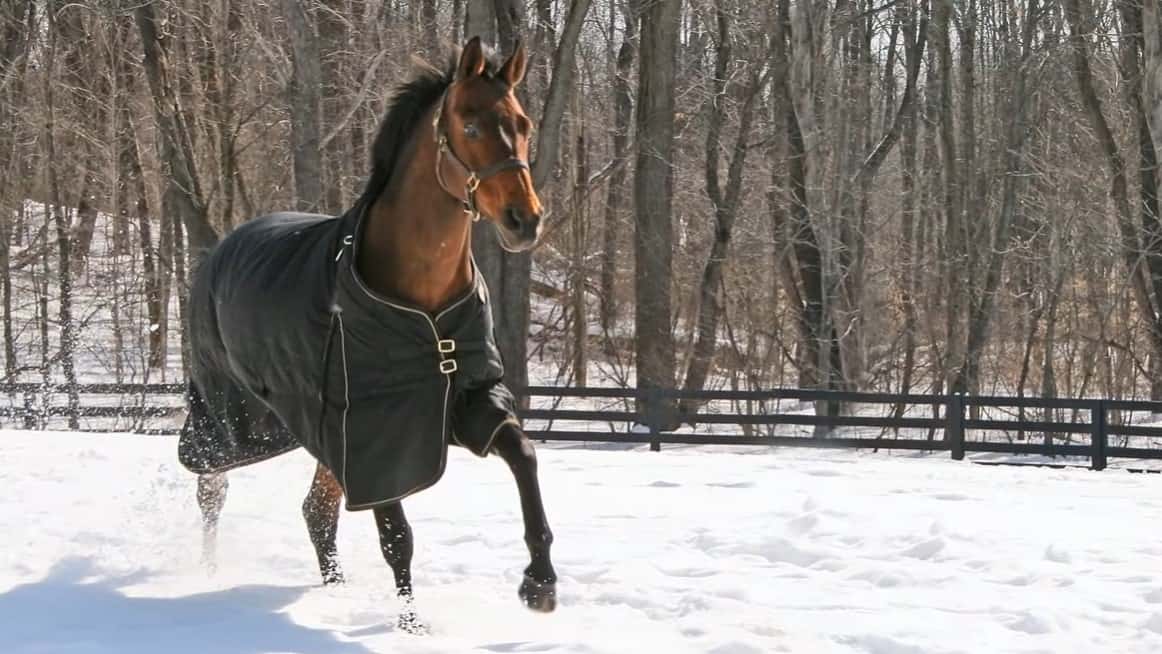Blankets are an important part of horse tack; they keep the animal clean and dry and provide warmth when the temperatures drop.
But because horse blankets come in different sizes and shapes, you need to take specific measurements of your horse so the blanket fits properly and serves its desired purpose.
If you are looking to buy a blanket for your horse but aren’t sure what measurements to take, read on. We provide reliable insights on how to measure a horse for a blanket to help you get a snug fit.
Materials Needed to Measure a Horse for a Blanket
In addition to your horse, you will need the following materials to take proper measurements:
- A piece of twine: Your twine should be long and non-stretchable. While you could just use the ordinary measuring tape, twine is the most recommended. Some measuring tapes will rattle and crackle, which may spook the horse. If you don’t have twine, use a non-stretchable piece of string.
- Marker pen: Use this to make markings on the twine.
- Tape measure: You need this to measure the twine.
- Pen and notepad: Use these to note down your measurement.
4 Easy Steps to Measure a Horse for a Blanket
While you can do this yourself, ideally, the task of measuring a horse for a blanket should be performed by two people. Once you have found a helper, follow these simple steps to properly take your measurement.
Step 1: Safely Tie Your Horse Outside
Tying your horse helps keep them still while you take the measurement. Do this outside, preferably in a quiet spot where they won’t get spooked. For best results, make sure to start by standing the animal squarely on level ground.
Step 2: Take the Measurement
Tie a knot at one end of the twine to mark where your measurement begins. Next, have someone hold the knotted area over the center of the equine’s chest where the neck meets the chest.
Now, run the twine over the side of the horse, making sure it covers the largest parts of their shoulder and stomach.
Keeping the twine parallel to the ground, continue running it as you walk to the tail area angling up to the center of the equine’s rump area. Use a marker pen to mark your twine at the point where it meets the center of the rump.
Step 3: Measure the Length of the Twine
Lay the twine straight on a flat surface and use a tape measure to determine the length between the knot and the marked area. This length in inches will be the size of your horse blanket. If you get a reading that is between two sizes, round it up to the nearest larger size.
Step 4: Note Your Measurement
Write down your measurement clearly on a notepad. This is especially important if you are not planning on getting the blanket right away.
The notepad will be your reference point and will keep you from forgetting the measurement not only for this time but for any future horse blanket sizing.
This video shows you how to correctly measure a horse for a blanket. Although it uses a tape measure, the concept is pretty much the same, and you will get your reading in a jiffy.
How to Match Your Measurement To Horse Blanket Sizes
Just like human clothing, horse blankets generally have two types of sizing based on where they are made. An American brand, for instance, will have a different sizing from a European brand. Whereas American sizes have a two-inch increment, European sizes have a three-inch increment.
But no matter where your preferred blanket is made, unless your horse measurement falls exactly on a specific size, you should always get the closest larger size.
If you will be draping the blanket over a saddle or layering it with another blanket, perhaps for competition purposes, then it would be a good idea to go for a bigger size.
Also, it is important to note that, like human clothing, some brands might have their blankets running slightly bigger or smaller. But if you have taken your measurement right, you should be very close to their standard measurements.
How to Know Whether Your Horse’s Blanket Fits Properly
Once you have taken the measurement, your next step will probably be to buy the blanket. But how do you know the blanket you get for your equine fits snuggly? Here are a few indicators:
- Putting the blanket on the horse: The blanket should easily fit the horse without obvious looseness or tightness.
- Bowel movement: Your horse should be able to pee or pass feces without any problems.
- Grazing: If the blanket fits well, your horse should be able to lower their head to the ground without difficulty. Put a few treats on the floor and check to see if the animal strains to lower their head. If the blanket is too tight, you will also see some pressure around its front.
- Room for withers and shoulders: A good horse blanket should fit properly over the shoulders and leave enough room around the withers. Try slipping two fingers between the shoulders and the blanket and between the withers and the blanket. If you can’t get your fingers between here or they get stuck inside, then the blanket is too tight.
Why It’s Important for Your Horse’s Blanket to Fit Properly
The major reason why you need to measure your horse for their blanket is to make sure it fits properly. But, why is this important? Keep reading!
A Fitting Blanket Keeps the Horse Comfortable
A blanket that doesn’t have the right fit can be very uncomfortable for your horse. The animal won’t like having their movements restricted or a piece of fabric applying pressure on their skin because it’s too tight.
And if the blanket is too big, it might get stuck on things, which could make the animal trip while out grazing.
If the horse feels uncomfortable in the blanket, it will try to take it off, and this is the last thing you want because not only can it damage the blanket but it can also get the animal injured.
A Properly-Sized Blanket Gets the Job Done
If your horse’s blanket is not the right size, it will not do the job it was designed for. Blankets are made to protect the horse from harsh conditions.
When it is too big, insects, mud, debris, water, and other elements get trapped between the horse and the blanket, which could irritate the animal and make it uncomfortable. Similarly, when the blanket is too small, the animal is not able to move properly or some of its parts remain uncovered.
A Well-Fitting Blanket Ensures the Horse’s Safety
When a blanket doesn’t fit properly, it becomes a safety hazard to your horse. This is especially true for horses who spend most of their time out in the trail and are constantly moving about.
If the blanket is too tight and rubs against the skin of your horse for an extended period of time, it may cause sores that could easily get infected.
If it’s too big, it could keep flapping underneath the animal’s belly, causing them to feel uncomfortable. It could get the horse injured too if they trip or stumble over it.
Also, as we mentioned, a blanket that is too large can get stuck on things as well, preventing the animal from moving about and causing it to pull and jerk.
Additional Tips for Sizing a Horse’s Blanket
- When you go to the tack shop, ask them about their return policy just in case you get home and the blanket doesn’t fit your horse.
- When trying the blanket, make sure to keep it clean. If possible, place a light cover on the equine before putting the blanket on. And if you need to exchange it, clean up any dirt or stray hairs before taking it back.
- If your horse doesn’t seem to cooperate during the fitting process, consider having the blanket altered to a sizing they can wear easily. Your tack shop might be able to find you someone who does this. But keep in mind that having the blanket too big or too small may make it unsafe or less comfortable for the horse.
The Takeaway
Getting a horse blanket that fits properly keeps your horse safe and comfortable while they move about. Luckily, measuring a horse for a blanket is an easy and straightforward process. Simply have the equine standing on level ground and measure its length from the chest to the rump area.
Whether you are using twine or fabric tape, make sure you are taking an accurate measurement. You don’t want to end up with a blanket too tight that it restricts your horse’s movement or too big that the animal keeps tripping.










